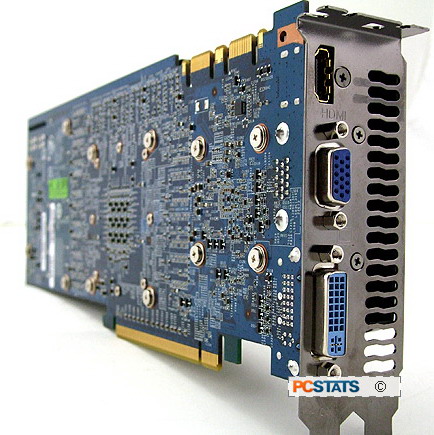 Gigabyte's GV-N285OC-2GI is the Lamborghini Murcielago of the videocard
world. The Lamborghini is fast, powerful and stylish. It inspires envy in those
who see it and you get a certain amount of prestige for owning one, simply from
the amazing pedigree.
Gigabyte's GV-N285OC-2GI is the Lamborghini Murcielago of the videocard
world. The Lamborghini is fast, powerful and stylish. It inspires envy in those
who see it and you get a certain amount of prestige for owning one, simply from
the amazing pedigree.
It's also
wildly impractical for most people. You can't take advantage of its speed and
power during your day-to-day driving, in fact when it comes to a lot of
typical-usage scenarios (winter driving, city driving, carrying more than one
Italian model at a time...) there are a lot of conventional cars out there that
will be more efficient, far less hassle, and cost a less.
The
pre-overclocked Nvidia GT200b core and tis videocard's massive 2GB of GDDR3
memory are similarly impractical for many games. NVIDIA
pulled out all the stops in making the Geforce GTX 285 refresh the fastest
single-GPU videocard on the market.
Gigabyte
took things even further by doubling the videocards' memory to 2GB, raising the
core clock from 648MHz up to 660MHz and bathing it in pixie dust. These changes
have inflated the Gigabyte GV-N285OC-2GI's cost significantly over that of a
standard-clocked 1GB Gigabyte Geforce GTX GV-N285OC-2GI videocard, but the
performance gains just aren't there to justify it in this reviewers opinion.
At screen
resolutions of 1920 x 1200 resolution with 8xAA or 16xAA turned on, having 2GB
of 2400MHz GDDR3 memory is overkill. The only situation where it seems to offer
a significant advantage is if when gaming on an extremely high resolution 30" LCD monitor.
 If you're running one of a very
few number of game titles that can span output to multiple monitors at once, the
extra memory will help.
If you're running one of a very
few number of game titles that can span output to multiple monitors at once, the
extra memory will help.
Both
scenarios are however uncommon, even amongst high performance gamers who are
willing to spare no expense where it counts, and in-game support for these
features is spotty at best.
nVidia's Geforce GTX 285 GPU does
posess greater theoretical performance than its closest rival, the Radeon HD 4890, but to be frank there are a number of
real-world scenarios where the Geforce card's capabilities are under-utilized.
Crysis with high IQ settings and Call
of Juarez both perform better with the more affordable Radeon HD 4890 videocard
than the Gigabyte
GV-N285OC-2GI being tested for you today. There are several scenarios where
multiple Radeon or Geforce GPUs will cost less money and offer more performance
than a single Gigabyte GV-N285OC-2GI, so keep that in mind as SLI or Crossfire
may in fact offer better framerates.
Most
importantly though, it's difficult to recommend investing $440 CDN ($406 USD, £245 GBP) in a
videocard when new DirectX 11 videocards are so close to being launched. While
I'm sure that games will eventually be able to take advantage of 2GB of memory
and an overclocked NVIDIA GT200b GPU, they're also going to start requiring
DX10.1 and DX11 capabilities in the next year or so, and regrettably that's not
something you'll get with the Gigabyte GV-N285OC-2GI.
With all
of that out of the way, the Gigabyte GV-N285OC-2GI is still a whole lot of
videocard. It has decent overclocking abilities far and beyond the
pre-overclocked settings from the factory, and enough raw power to make any game
playable at large resolutions. If you hate the hassle of multiple GPUs and money
isn't an issue, Gigabyte's GV-N285OC-2GI is one of the fastest single-GPU
videocards out there!.
Related Articles
Here are a few other articles that you might enjoy as
well...
- Gigabyte GV-N26OC896H-GA Geforce
GTX260 Core 216 Videocard Review
- ASUS EN9400GT-1GB Geforce 9400GT
Half-Height Videocard Review
- Gigabyte GV-R435OC-512I Radeon
HD 4350 Half-Height Videocard Review
- ASUS EN9600GT DI/512MD3/A
Geforce 9600GT Rev.B Videocard Review
- Sparkle GTX260 Core 216 GeForce
GTX 260 Videocard Review
- Gigabyte GV-R477D5-512H-B Radeon
HD 4770 Videocard Review
- ASUS EAH4770 HTDI/512MD5/A
Radeon HD 4770 Videocard Review
- ASUS ENGTS250 DK Geforce GTS 250
Videocard Review
- ASUS EAH4890 HTDI/1GD5/A Radeon
HD 4890 Videocard Review
